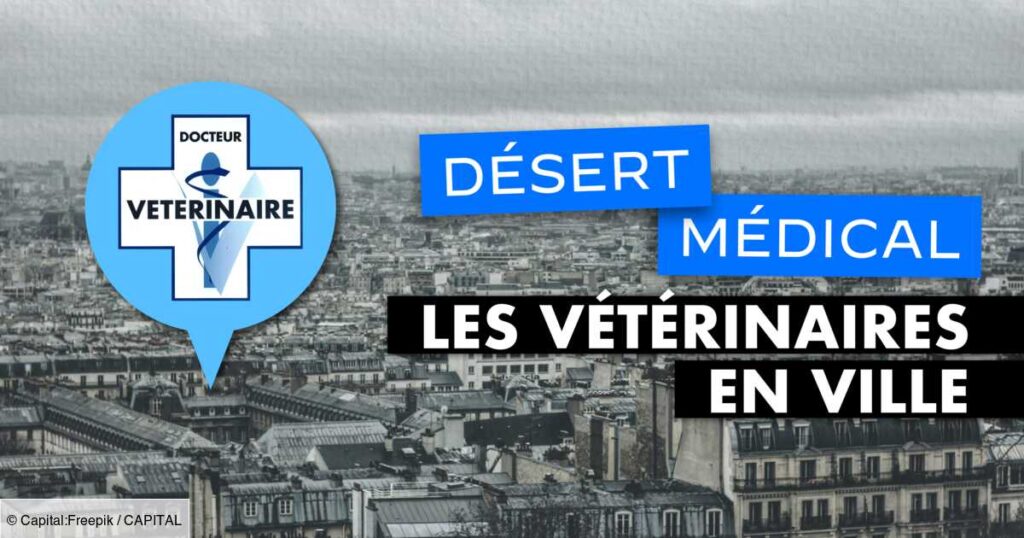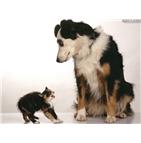
Reading time:
3 mins
The veterinary network is weakening in France. Attracted by the city, young “vets” are deserting rural areas to take care of pets, to the great dismay of farmers who worry about this exodus to the detriment of their livestock.
We often talk about medical deserts, these areas where it is difficult to find a doctor, less so about veterinary deserts. However, in certain regions of France, “vets” are becoming increasingly rare and their number sometimes no longer meets demand, particularly in breeding areas where the number of animals is high. The figures in this article come from the Demographic Atlas of the National Order of Veterinarians published in 2023 on data from December 2022. They relate to practitioners registered on the Order's roll, who represent 97% of veterinarians.
The national demographic observatory for veterinarians has thus identified profound territorial disparities. Occitanie, Auvergne-Rhône-Alpes and Pays de la Loire saw their number of veterinarians registered with the National Order of Veterinarians increase by almost 5% each, and up to 16% for the Paca regions. and Occitanie. Conversely, even if they increase by around 1%, the Hauts-de-France, Grand Est and Centre-Val de Loire regions appear to be the least attractive for veterinarians in 2022.
The rest under this advertisement
The rest under this advertisement
The veterinary crisis in rural areas
The “livestock” sector (raised for production, as opposed to pets) is less and less attractive. Today, 1 in 6 veterinarians work on farms – nearly 6,500 according to the National Council of the Order –, a decline of 2.4% at the end of 2022 compared to the previous year. The proportion is in “constant decline» for years, specifies the authority.
The reasons are multifactorial. Harshness, night shifts, longer and longer journeys to go from farm to farm… “In addition to the loss of attractiveness of many rural professions, we notice that the most penurious regions are those where there are fewer livestock farms than before. The veterinarian's work therefore includes longer trips, sometimes up to 3 hours of travel per day which are not profitable.», Explains Anne Laboulais, spokesperson for the National Order of Veterinarians. Certain societal developments also explain recruitment difficulties: as with rural doctors, young veterinarians no longer accept as easily to work 80 hours a week. “It would take on average 1.5 young people to replace an older person who retires“, she specifies.
The rest under this advertisement
Since 2015, measures have been taken to strengthen the veterinary network throughout the territory. At the end of 2020, a law came to reform the code of local authorities, in order to allow the latter to provide aid for the installation and maintenance of veterinary activities in rural areas. “By looking for the areas in tension, the ministry realized that it was all of France!», reports Anne Laboulais. Based on a diagnosis of the territories, carried out with local stakeholders (communities, veterinarians and breeders), the Ministry of Agriculture has initiated a whole series of measures adapted to local needs, which are being gradually implemented: housing aid in certain tense areas, aid for the creation of a clinic, aid for travel, or even aid to equip breeders to enable them to move their animals themselves to the clinic closest to their home or farm .
The rest under this advertisement
The rest under this advertisement
One measure has worked particularly well: that which gives final year students interested in rural areas the opportunity to complete a long-term tutored internship in immersion on a farm in order to get to know the territory and the relationship with the breeder. “Today, there are more requests for internships than structures capable of welcoming» around a hundred students per year, curious to discover exercise in rural areas, according to Anne Laboulais.
“If the ministry is so reactive, it is because it has formed a partnership with the profession to carry out certain health police actions. If a vet detects a disease transmissible to humans, he passes the information on to the authorities who can take action. The State cannot do without these field relays», Explains our interlocutor.
The explosion in demand for care in the city
At the same time, the number of practitioners working with companion animals increased by 2.8%. They represent between 70 and 72% of those registered, including “mixed” veterinarians, who also work with livestock. These so-called “canine” practitioners are mostly located in towns or on the outskirts of towns. As in the countryside, it is a full-employment profession, not for its lack of attractiveness this time, but due to the explosion in demand for care from pets, particularly since the Covid pandemic. -19. Dogs, cats and rabbits are now often considered “full members of the family”, which led to a high demand for veterinary services and absorbed graduates entering the job market. “Even in the heart of Paris, we observe some recruitment difficulties», underlines Anne Laboulais.
The rest under this advertisement
In the city, the profession is not subject to a vocational crisis, unlike in the agricultural sector. A few years of adjusting training so that the supply of veterinarians can meet demand may simply be enough. “The number of places in schools is increasing and a private school opened in Rouen last year. We are hopeful of seeing 840 graduates per year in French schools within four or five years, and the same number of graduates from European universities“, she rejoices.
Receive our latest news
Employment, management, rights, every week career news.




